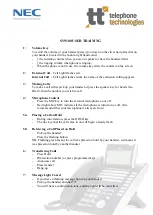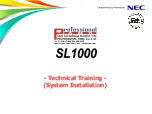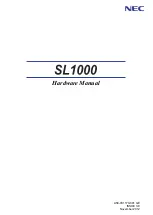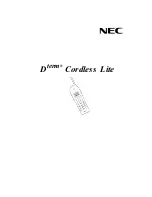
System Programming
4-59
4.2
System Programming
[502]
Selects how the 2 outgoing messages (OGM1 and OGM2) are used, MODE1 through
MODE6.
Default
MODE1
• Programs [414]-[416] “Exchange Line Mode – Day/Night/Lunch” are used to assign
“DISA1”, “DISA2” or “UCD” to each exchange line according to this assignment.
• UCD-END is automatically used when “UCD” is assigned in programs [414]-[416],
“Disconnect” is selected in program [523] “UCD Busy Mode”, and “MODE4” is selected
in this program.
• DISA is automatically used when “UCD” is assigned in programs [414]-[416], “Intercept”
is selected in program [523], and “MODE6” is selected in this program.
• If the optional OGM/FAX Detection card is not installed, this assignment should be
“MODE1”.
• Feature References
Section 3, Features
Direct Inward System Access (DISA), Outgoing Message (OGM),
Uniform Call Distribution (UCD)
Mode
1
2
3
4
5
6
[502] OGM Mode Selection
!
!
0
5
NEXT
2
STORE
END
SELECT
(MODE 1/
2/3/4/5/6)
OGM1
DISA1
DISA1
UCD
UCD
UCD
UCD
OGM2
DISA1
DISA2
UCD
UCD-
END
DISA1
DISA
Description
The system can receive 2 incoming calls via the DISA feature
at the same time. This is useful when receiving many calls.
An example: DISA1 is used in the day mode and DISA2 is
used in the night mode.
The system can hold up to 2 incoming calls via the UCD
feature at the same time until any extension is available.
The system disconnects an incoming call via the UCD feature
when the assigned waiting time in [521] “UCD Busy Waiting
Time” expires.
An example: UCD is used in the day mode and DISA1 is used
in the night mode.
The system leads an incoming call via the UCD feature to the
DISA feature by OGM2 when the assigned waiting time in
[521] “UCD Busy Waiting Time” expires and “Intercept” is
selected in [523] “UCD Busy Mode”.
☞
PSQX1708ZA-10E.QX 99.10.15 1:06 PM Page 59
Summary of Contents for KX-TA624
Page 15: ...Section 1 Basic System Construction ...
Page 17: ...Section 2 Installation ...
Page 51: ...Section 3 Features ...
Page 125: ...Section 4 System Programming ...
Page 212: ...4 88 System Programming ...
Page 213: ...Section 5 Appendix ...
Page 222: ...5 10 Appendix ...
Page 223: ...Section 6 Troubleshooting ...
Page 227: ...Section 7 Programming Tables ...
Page 275: ...Section 1 Installation ...
Page 287: ...Section 2 Operations ...
Page 306: ...10 ...
Page 409: ...Appendix Section 2 Appendix ...
Page 420: ...2 12 Appendix ...
Page 426: ...Memo ...
Page 427: ......
















































